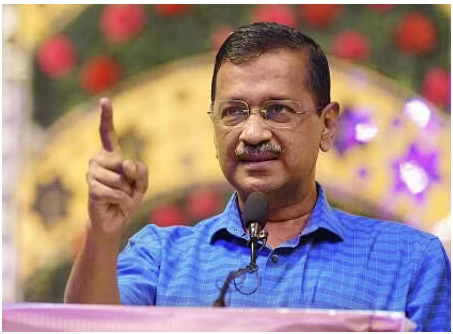
India Digital Leap: Government Initiatives Fuel Technological Innovation and Connectivity from Cities to Villages
India is witnessing a significant transformation in its digital landscape, marked by rapid expansion in digital infrastructure and technological advancements.
This progress is largely driven by government-led initiatives aimed at fostering connectivity, innovation, and technological literacy, especially in rural and underserved regions. With programs focusing on everything from high-speed internet access to digital literacy training, India is accelerating its journey toward becoming a digitally empowered society. The efforts reflect a larger national goal: to harness the potential of technology to uplift communities, create opportunities, and bridge socio-economic gaps.
One of the most impactful initiatives driving this change is the BharatNet project, a government-sponsored program designed to provide high-speed broadband to rural India. Launched with the vision of connecting even the most remote villages, BharatNet aims to bridge the digital divide by ensuring that all citizens have access to reliable and affordable internet services. This initiative is critical not only for providing online access but also for supporting the government’s broader goals in areas such as education, healthcare, and e-governance. As more villages come online, citizens are able to access resources that were previously out of reach, from online learning platforms to telemedicine consultations. BharatNet’s progress has empowered small towns and villages by connecting them to the rest of the country and the world, opening doors to knowledge, services, and markets.
In addition to expanding connectivity, India has made significant strides in promoting tech literacy across the country. The government’s Digital India program has played a central role in increasing digital awareness and skills, especially in rural areas. Through digital literacy programs, citizens are being trained to use digital devices, access government services online, and conduct transactions through mobile payment platforms. These programs are essential in building a foundation for an inclusive digital economy, where everyone—regardless of their location or background—can participate and benefit. From farmers who can now access weather updates and market prices through mobile apps, to students in remote villages attending online classes, digital literacy is reshaping lives across India. Digital India’s success in raising awareness about technology has contributed to a culture where digital tools are no longer perceived as luxuries but as necessary resources for daily life.
Another significant development is the establishment of innovation hubs and technology centers in various parts of the country, with a focus on rural areas. These centers are not just about providing access to technology but about creating spaces where ideas can be nurtured, and solutions can be developed to address local challenges. By setting up innovation labs and startup incubators outside of major cities, the government is ensuring that the benefits of digital transformation extend beyond urban centers. These hubs provide resources for aspiring entrepreneurs, including mentorship, funding, and networking opportunities, enabling individuals in rural areas to turn their ideas into viable businesses. These centers also foster collaboration between government agencies, educational institutions, and private sector partners, creating ecosystems where innovation can thrive. The goal is to empower local talent and address specific needs, such as agriculture, healthcare, and education, with tech-driven solutions.
The expansion of e-governance services is another critical element of India’s digital transformation. Through platforms such as MyGov and various state-level portals, citizens can now access a wide range of government services online, from applying for documents and paying utility bills to accessing welfare programs. This shift to digital governance has made government services more transparent, efficient, and accessible to everyone, including those in rural areas who previously had to travel long distances to reach government offices. By simplifying processes and reducing bureaucratic hurdles, e-governance is enhancing citizens’ trust in public institutions and making everyday interactions with the government smoother. The ease of access to government services has had a profound impact on individuals and communities, empowering them to engage more actively in the democratic process and hold authorities accountable.
Mobile connectivity has also been a driving force behind India’s digital revolution. With smartphone penetration rising rapidly, people across the country are now using mobile devices as their primary means of accessing the internet. The government has worked to support this trend by introducing affordable data plans and expanding mobile network coverage, even in remote regions. Initiatives such as the Pradhan Mantri Gramin Digital Saksharta Abhiyan (PMGDISHA), which aims to make six crore rural households digitally literate, have further accelerated the adoption of mobile technology. As a result, mobile phones have become indispensable tools for communication, learning, and commerce, providing a bridge between rural and urban areas. This access has not only improved the quality of life but has also created new opportunities for economic growth, as small businesses and entrepreneurs can now reach wider markets through digital platforms.
The growth of digital payments and fintech in India has also been transformative. With the introduction of the Unified Payments Interface (UPI), India has become a global leader in mobile payments, enabling even those in remote areas to engage in secure and convenient digital transactions. UPI’s success has simplified transactions for millions, allowing small businesses to thrive and giving individuals a cashless, safe way to manage finances. By fostering a cashless economy, digital payments are helping reduce dependency on physical cash, making financial services more inclusive and accessible. The government’s focus on promoting digital payments, particularly through incentives and awareness campaigns, has played a crucial role in accelerating adoption. This shift has had far-reaching effects, enabling financial inclusion on an unprecedented scale and allowing millions to join the formal economy.
Furthermore, India’s embrace of artificial intelligence (AI) and machine learning (ML) is laying the groundwork for advanced applications that can benefit various sectors, from agriculture to healthcare. AI-driven tools are being developed to provide real-time insights for farmers, predictive analysis for businesses, and personalized education for students. By harnessing the power of AI, India is working toward creating solutions that address local challenges in cost-effective and scalable ways. The government is also investing in AI research and training programs to build a skilled workforce that can drive future growth in this field. These advancements highlight India’s commitment to leveraging cutting-edge technologies not just for economic growth but for improving the quality of life across diverse segments of society.
India’s digital infrastructure expansion is more than just an effort to improve connectivity; it’s a vision to create a more inclusive, empowered, and sustainable society. The government’s efforts to connect rural areas, promote digital literacy, and create innovation hubs are transforming the way people interact with technology. These initiatives are empowering individuals with the tools they need to thrive in a digital world, providing opportunities for economic growth and personal development. The positive impact of digital infrastructure expansion can be seen in improved access to education, healthcare, financial services, and government support, all of which are essential for a thriving society.
As India moves forward, the focus will likely remain on expanding connectivity and accessibility, ensuring that digital transformation reaches every corner of the country. With the groundwork already in place, the potential for future growth is immense. By continuing to invest in digital infrastructure and innovation, India is positioning itself as a leader in the global digital economy. The country’s journey toward a digitally inclusive society reflects a commitment to using technology as a tool for social and economic progress. With a strong foundation of digital infrastructure and a growing culture of innovation, India’s digital transformation is setting a precedent for how emerging economies can embrace technology to foster growth, reduce inequality, and improve the quality of life for their citizens.
For the latest updates-click here.


